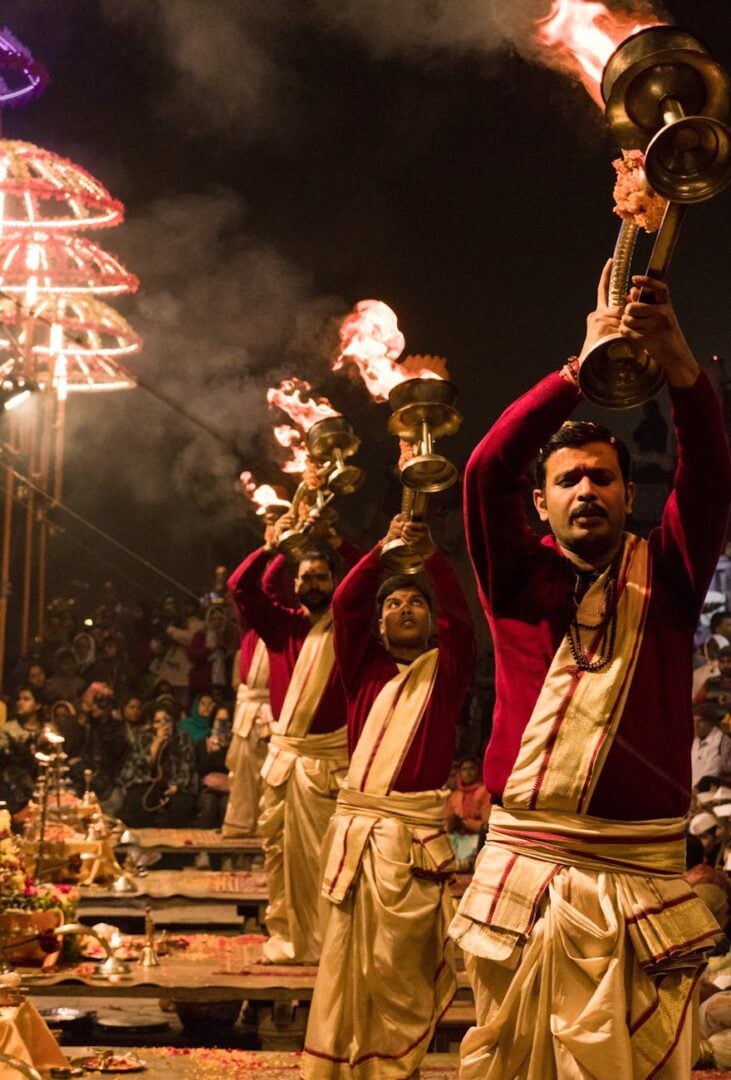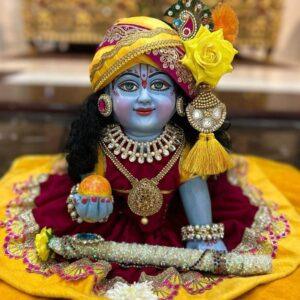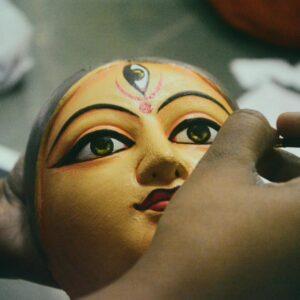
Aarti, a time-honored Hindu tradition, transcends the simple act of offering light to deities. It embodies profound spiritual symbolism and meaning. This exploration delves into the historical roots, symbolic interpretations, and ceremonial aspects of Aarti, enriching our understanding of this cherished practice.
Tracing the Historical Tapestry of Aarti: From Ancient Fires to Contemporary Expressions
The roots of Aarti can be traced back to the ancient Vedic times, where fire held a place of paramount importance in rituals. The Agnihotra ritual, an ancient fire ceremony, is believed to be the precursor to Aarti. Vedic texts revere fire as a symbol of purity, transformation, and divine presence.
The journey of Aarti through the ages is marked by adaptation and evolution:
- Regional Diversity: Across the Indian subcontinent, Aarti is celebrated in unique ways, reflecting the rich tapestry of cultural practices.
- The Bhakti Movement: Revered saints like Mirabai and Tulsidas played a pivotal role in popularizing Aarti.
- Adaptation and Integration: Temples, homes, and festivals embraced Aarti, incorporating elements of music, prayer, and offerings.
- Festivals and Celebrations: Aarti is an integral part of major festivals such as Diwali and Navaratri.
Classical texts like the Rigveda and Bhagavad Gita underscore the importance of light offerings in spiritual practices.
Deciphering the Spiritual Language of Aarti: Symbolism and Significance
Each element of Aarti is imbued with profound symbolism:
- The Sacred Flame: Representing the divine presence, the flame symbolizes the light of knowledge that dispels the darkness of ignorance.
- The Circular Motion: This gesture signifies the cyclical nature of life, death, and rebirth, mirroring the rhythm of the universe.
- Offerings of Devotion: Flowers, incense, and food represent various aspects of devotion, surrender, and the interconnectedness of life.
- The Power of Sound: Bells, conch shells, and hymns are used to invoke divine energies and elevate the spiritual atmosphere.
- Darshan: A Sacred Exchange: The act of seeing and being seen by the deity during Aarti represents a profound connection between the devotee and the divine.
Aarti cultivates a sense of peace, unity, and spiritual upliftment. It transforms the environment into a sacred space, purifying both the physical surroundings and the minds of those present.
The Ritual Choreography of Aarti: Steps and Variations
Preparing for Aarti involves gathering specific items:
- The Thali: A tray that holds all the sacred objects used during the ritual.
- The Diya or Deepa: The lamp, often made of brass or clay, which holds the sacred flame.
The ritual unfolds in a series of steps:
- Igniting the Flame: The lamp is lit, symbolizing the dispelling of darkness.
- Circular Motions: The flame is gently waved in a circular motion before the deity.
Regional Variations:
- South India: Camphor is often used as the primary source of light, releasing a purifying aroma.
- North India: Musical instruments like harmoniums and tablas often accompany the chanting of prayers.
Specific prayers and hymns, such as ‘Om Jai Jagdish Hare,’ are chanted to invoke divine blessings and express devotion.
Aarti’s Enduring Impact: Psychological, Social, and Cultural Significance
Beyond its spiritual significance, Aarti has a profound impact on individuals and communities:
- Fostering Unity: Aarti is often performed collectively, strengthening community bonds and fostering a sense of shared faith.
- Psychological Well-being: The rhythmic chanting, the visual beauty of the flame, and the fragrant incense create a calming and meditative experience, promoting mental well-being.
- Transmission of Tradition: Families pass down the tradition of Aarti through generations, preserving cultural heritage and strengthening familial bonds.
Aarti holds a significant place in major life events like weddings and housewarmings, infusing them with sacredness and auspiciousness. Children, through observing and participating in Aarti, imbibe cultural values and develop a sense of spiritual grounding. The structured rituals provide a tangible way to express gratitude, seek blessings, and connect with the divine.
Aarti in the Modern World: Adapting While Preserving Essence
Aarti, while deeply rooted in tradition, has adapted to contemporary lifestyles:
- Virtual Aarti: Online platforms allow individuals to participate in Aarti ceremonies remotely, transcending geographical boundaries.
- Convenience and Accessibility: Online Aarti kits make it convenient for individuals to perform the ritual at home.
- Maintaining Cultural Connections: For the diaspora, Aarti serves as a powerful tool to stay connected to their roots and pass on their heritage to future generations.
Aarti’s enduring relevance is reflected in contemporary art, music, and literature. Growing environmental awareness has led to the adoption of eco-friendly alternatives like LED lamps. Social media platforms stream live Aarti ceremonies from famous temples, making this sacred practice accessible to a global audience. While commercialization is inevitable, preserving the sanctity and spiritual essence of Aarti remains paramount.
Aarti: A Flame That Illuminates the Soul
Aarti is far more than a ritualistic practice; it is the very heartbeat of a rich cultural and spiritual legacy. Its roots, symbolism, and rituals connect individuals to their ancestors, their communities, and the divine. The act of lighting the lamp, offering prayers, and chanting hymns is a continuation of a timeless tradition that brings peace, unity, and spiritual solace.
In today’s fast-paced world, Aarti offers a much-needed pause for reflection and introspection. Whether performed in grand temples or the quiet sanctity of homes, it serves as a poignant reminder of shared values and collective spirituality. As we embrace the conveniences of modern life, let us strive to keep the flame of Aarti alive, passing on its warmth and wisdom to future generations.
Unveiling the Deeper Layers of Aarti: Frequently Asked Questions
What is the essence of Aarti?
Aarti is a revered Hindu ritual where a flame, fueled by ghee or camphor, is offered to deities. It is an integral part of puja, the Hindu practice of worship.
What is the purpose behind performing Aarti?
Aarti is an expression of love, devotion, and reverence towards the divine. It is believed to purify the mind, cleanse the surroundings, and invite positive energy.
What are the essential elements of an Aarti ceremony?
Aarti typically involves a brass or silver plate (thali), wicks, ghee or camphor, flowers, incense sticks, and a lamp known as a ‘diya’.
How often is Aarti performed?
Aarti is often performed daily, usually in the morning and evening. It is also an integral part of festivals, special occasions, and life cycle ceremonies.
What is the significance of the Aarti flame?
The flame embodies the presence of the divine. It symbolizes the dispelling of ignorance (darkness) and the arrival of knowledge and wisdom (light).
Can Aarti be performed at home?
Yes, Aarti is commonly performed in homes. Many families have dedicated altars where they perform Aarti as part of their daily prayers.
What is the deeper spiritual meaning of Aarti?
Beyond the outward ritual, Aarti symbolizes the surrender of the ego to the divine. It is an act of humility and devotion, aiming to establish a profound connection with the divine.
Do all Hindu temples conduct Aarti?
Aarti is an integral part of daily rituals in almost all Hindu temples. The specific timings and practices may vary depending on the temple and the region.


